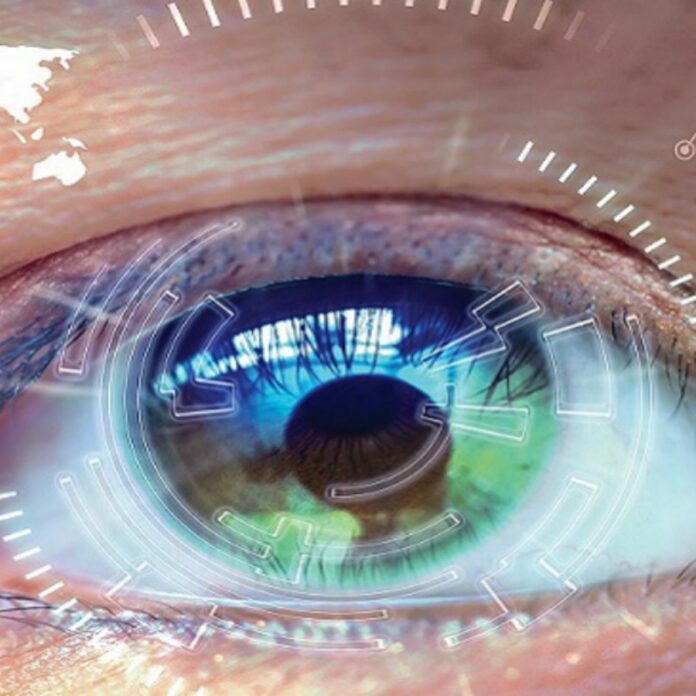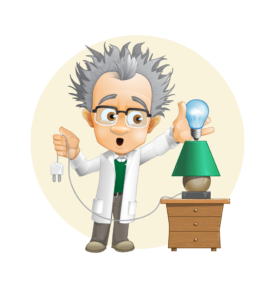I recently received an email from a reader who wanted to improve and increase the amount of light in her home in the easiest and safest way possible. As easy as it may seem to add more light, there were some health concerns that needed to be taken into account before deciding what route to choose.
 To give some background on the situation, this Dr. Bulb reader lives and cares for her aging mother who has a medical condition known as advanced macular degeneration (AMD). AMD is a common eye condition that leads to vision loss among people ages fifty and older. Due to this vision loss, she requires as much light as possible for visibility. In addition to her mother’s concerns, the reader has extremely sensitive eyes herself; glaring light is very uncomfortable for her. Currently installed in her home are two ballasts with two four-foot tube fluorescents placed in a 5’ x 7’ recessed area. A frame surrounds the recessed area, which is covered by a frosted insert to cover the unsightly fixtures. The frame and frosted insert cut down the amount of light getting through.
To give some background on the situation, this Dr. Bulb reader lives and cares for her aging mother who has a medical condition known as advanced macular degeneration (AMD). AMD is a common eye condition that leads to vision loss among people ages fifty and older. Due to this vision loss, she requires as much light as possible for visibility. In addition to her mother’s concerns, the reader has extremely sensitive eyes herself; glaring light is very uncomfortable for her. Currently installed in her home are two ballasts with two four-foot tube fluorescents placed in a 5’ x 7’ recessed area. A frame surrounds the recessed area, which is covered by a frosted insert to cover the unsightly fixtures. The frame and frosted insert cut down the amount of light getting through.
A local handyman suggested changing the setup to instead house six 1,600-lumen LED bulbs such as A19s or A21s in an evenly spaced area. A lighting salesperson at a hardware store created some confusion when he mentioned that adding more bulbs doesn’t necessarily make more light. Not totally convinced that the information provided by this lighting guy was accurate, she emailed Dr. Bulb to ask if I could, well, shed some light on the situation. Her main questions were: Would fewer light bulbs give the same amount of light? How can I get the most amount of light in the area? And one last caveat is that she did not want anything over 3500K, as her researched showed that temperatures over 3500K risk harm to the eyes from blue light emission.
Do More Lumens = More Light?
First and foremost, let’s debunk what the lighting guy at the hardware store said, that putting more bulbs doesn’t necessarily mean more light. Is this true? Only if the additional lamps delivered far fewer lumens or they were put behind a surface that didn’t let light pass through. More lamps does equal more light. For example, six 1,600-lumen bulbs will provide more light than one 1,600-lumen bulb. 9,600 lumens of light will deliver more footcandles than 1,600 lumens. In this case, the light would provide more direct and reflective light that will easily pass through the panels.
The handyman’s suggestion to change the setup to house six 1,600 lumen LED bulbs evenly spaced in the area would work. Even distribution of the lamps would reduce the hot spots, or, at minimum, make it appear symmetrical. As omnidirectional LED lamps such as A19 and A21 LED lamps do not throw light in an even omnidirectional manner, placing the new sockets on the ceiling would certainly reduce hotspots. Another alternative was to replace what looks like T12 34w 4′ linear fluorescent lamps with TLEDs. T12 lamps emit approximately 2,300 mean lumens in a 360-degree pattern. A 17w TLED will emit close to 2,300 lumens. The TLEDs will last longer and have superior color rendering over the T12s. If more light is needed, the reader could add a couple of single-lamp 4′ fixtures or another 2-lamp 4′ fixture. Any choice would be based on creating more evenly distributed light. Two single-lamp, four-foot fixtures would be located on the outside edges, with one two-lamp fixture placed in the center.
This reader’s current fixtures (see above picture) are easily convertible to TLEDs; directions can be found here. Additionally, for further questions and answers on T8 LED lamps, visit this page. Replacement non-shunted tombstones are available at Amazon. 3000K TLEDs and 3500K TLEDs are available at Access Fixtures.
Choosing a Suitable Kelvin Temperature
This reader asked if panel lights, like the kind that replace troffers in suspended ceilings, could provide a new light source. While this could be done, it wouldn’t necessarily fit into the previous framework, as shown in the pictures provided. Additionally, suspending any panel fixtures from the reader’s kind of ceiling would be challenging. If the panels end up too close, light will not appear even. Aside from aesthetics, most panel lights are available in 4000K and 5000K; 3000K, which the reader preferred, is not often stocked in these fixtures.
Lastly, it was mentioned that research shows that Kelvin temperatures over 3500K risks harm to the eyes from blue light emission. While I am not a doctor (and don’t play one on TV), I have a strong dislike of living or working under light over 3500 Kelvin myself. Regardless of the motivation involved, 3000K or 3500K light will most living or working environments much more appealing and easier to work in.
Do you have a question you’d like to ask Dr.Bulb? Ask me!



